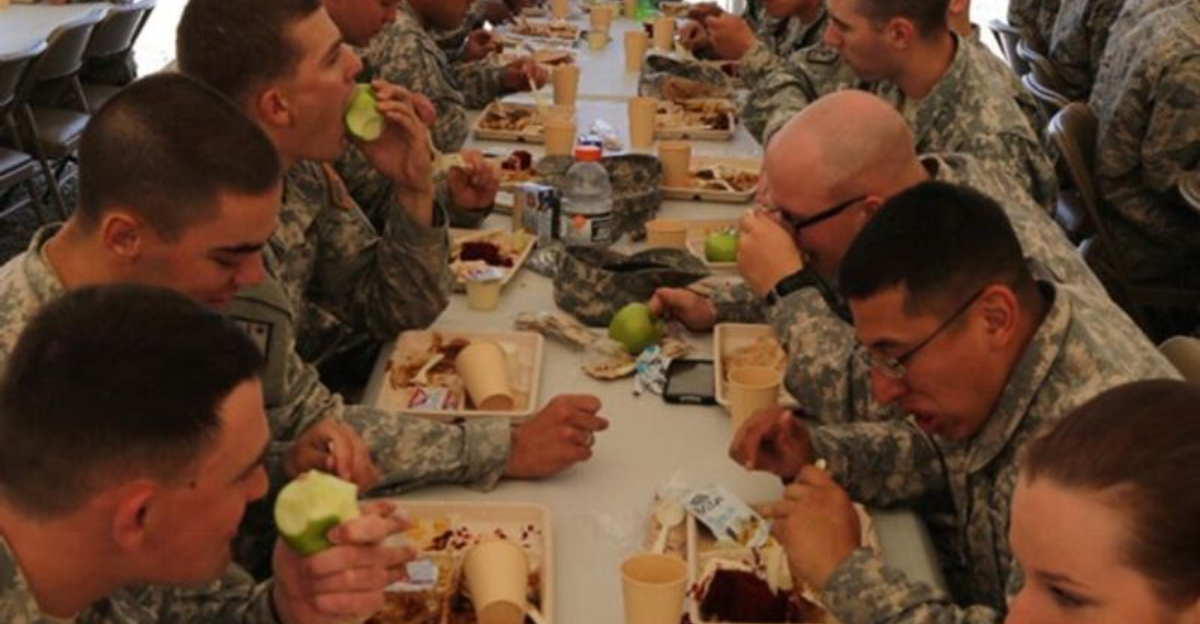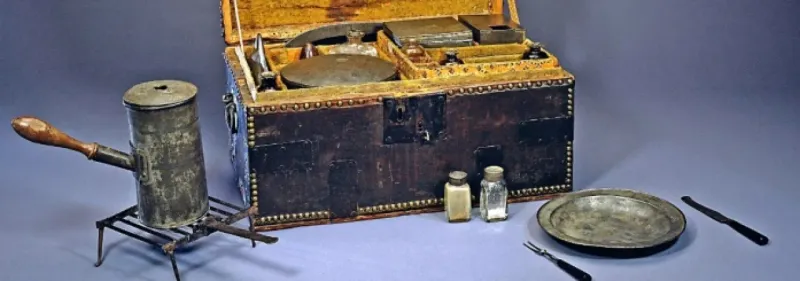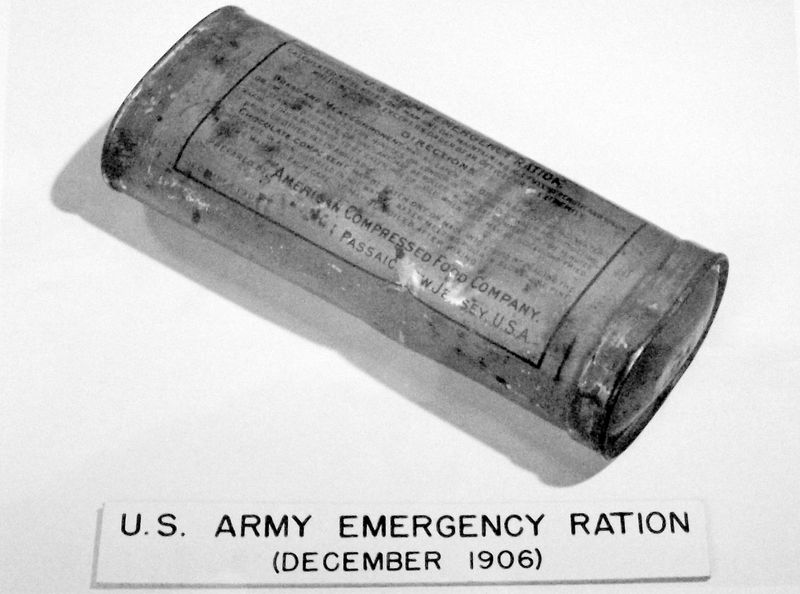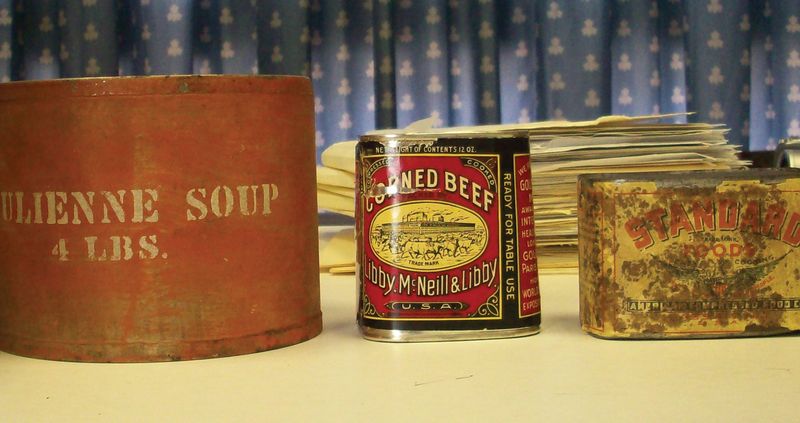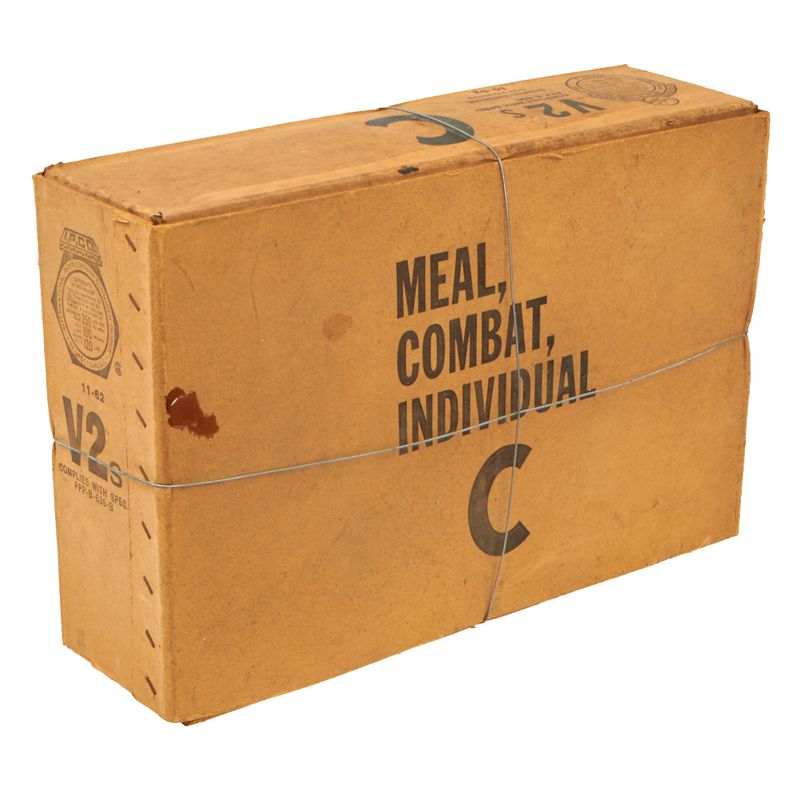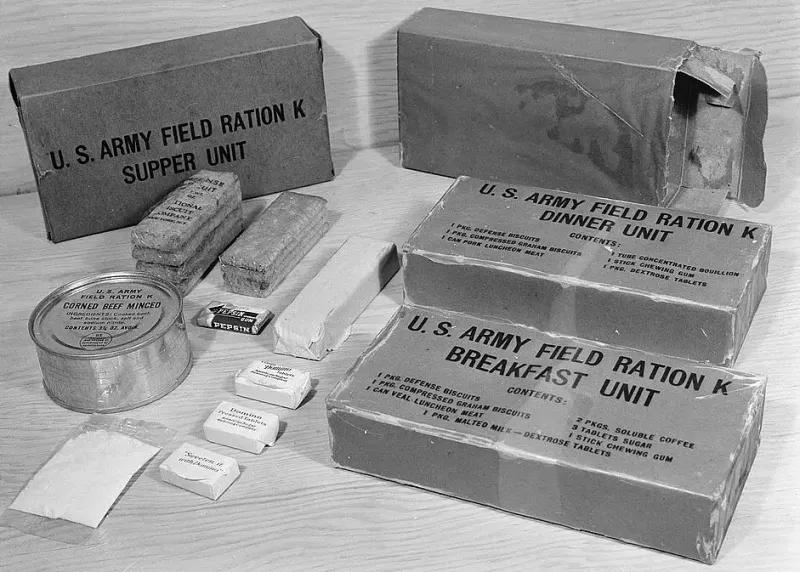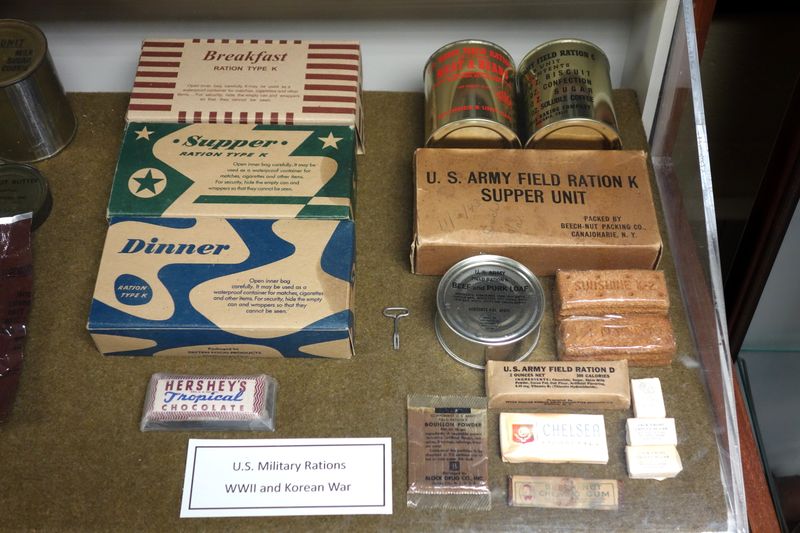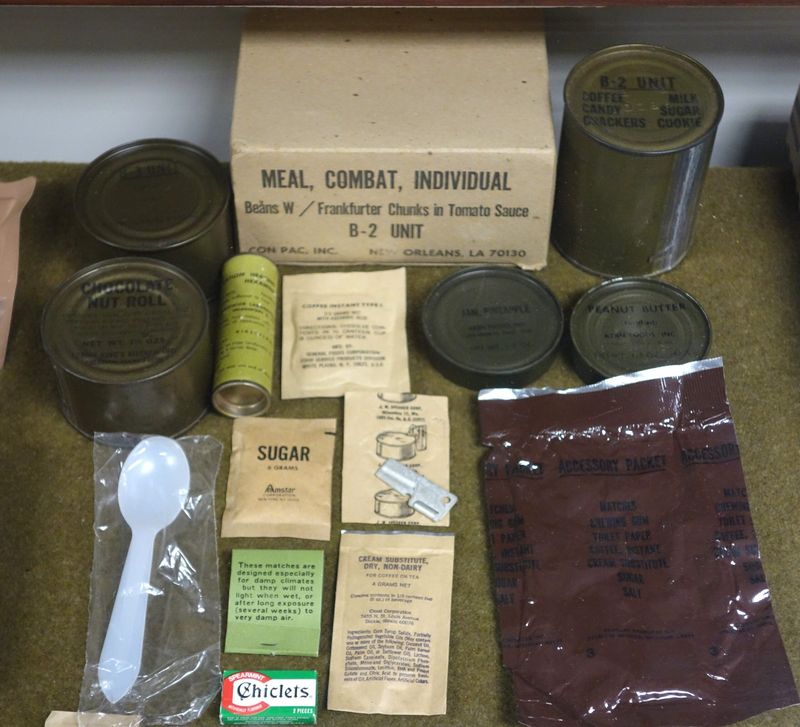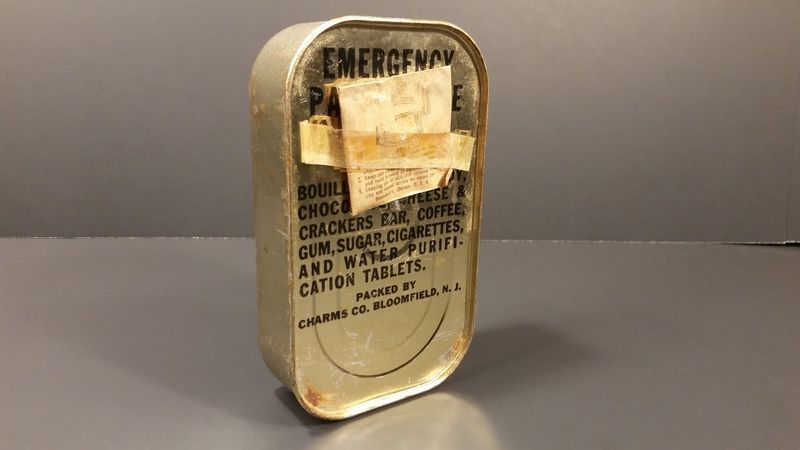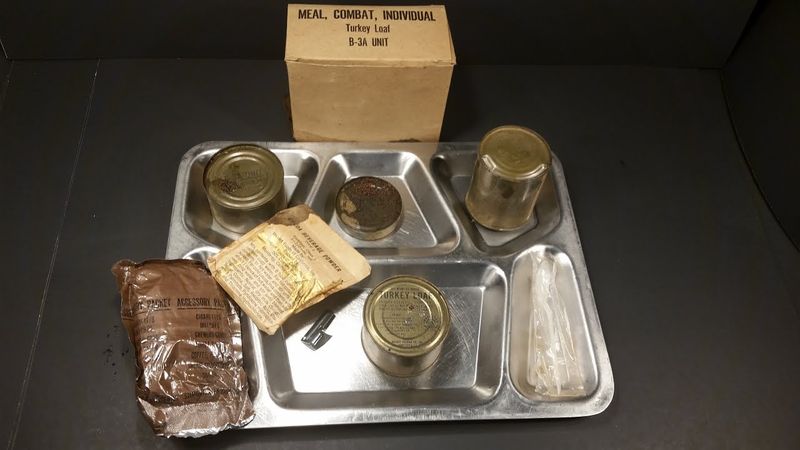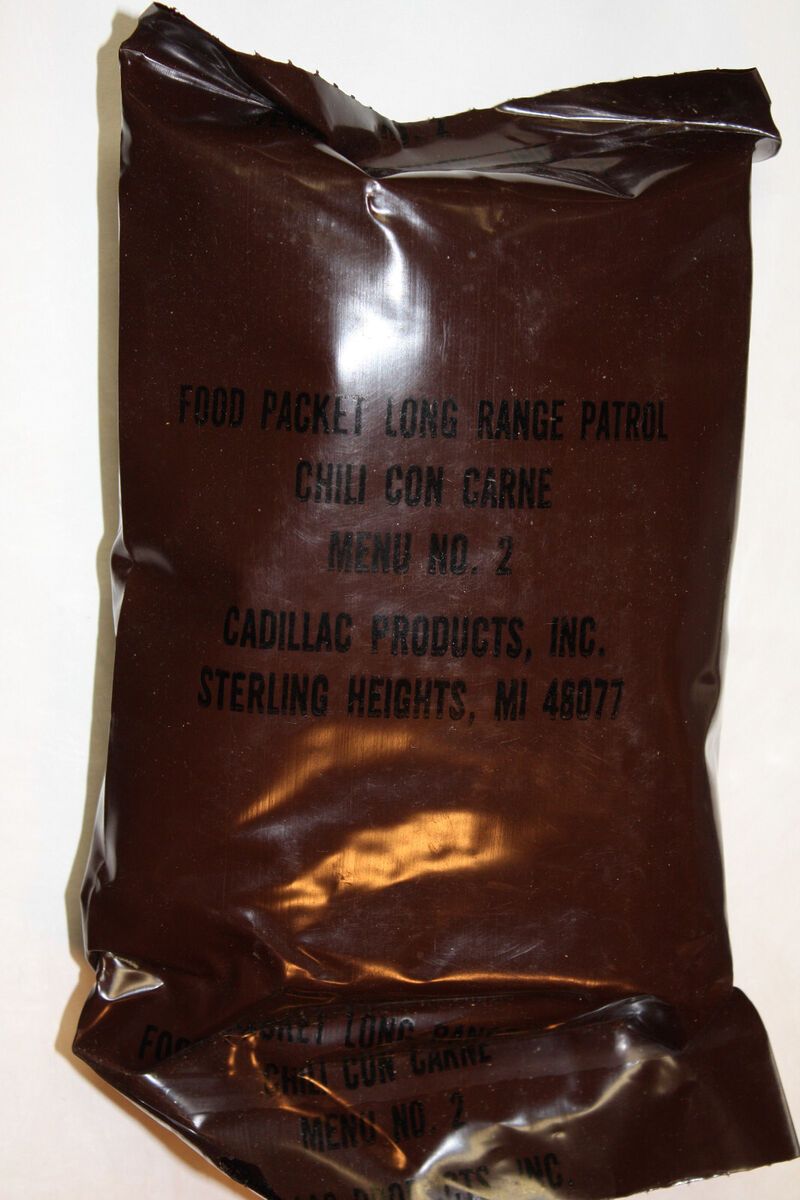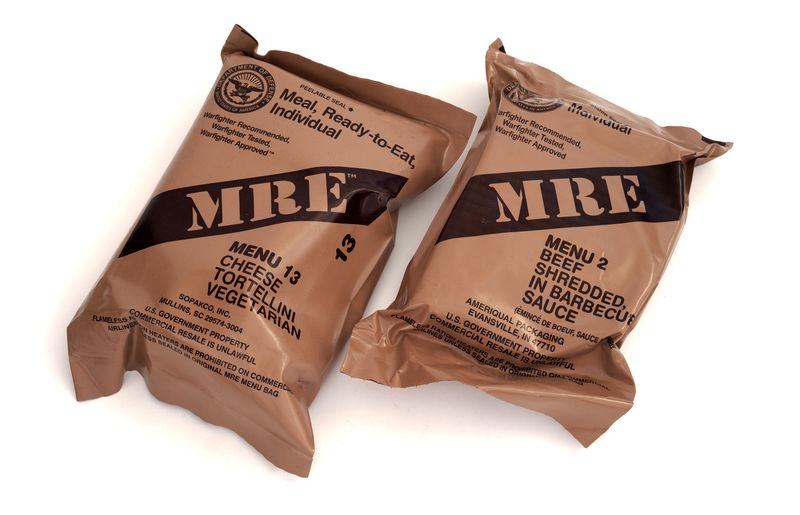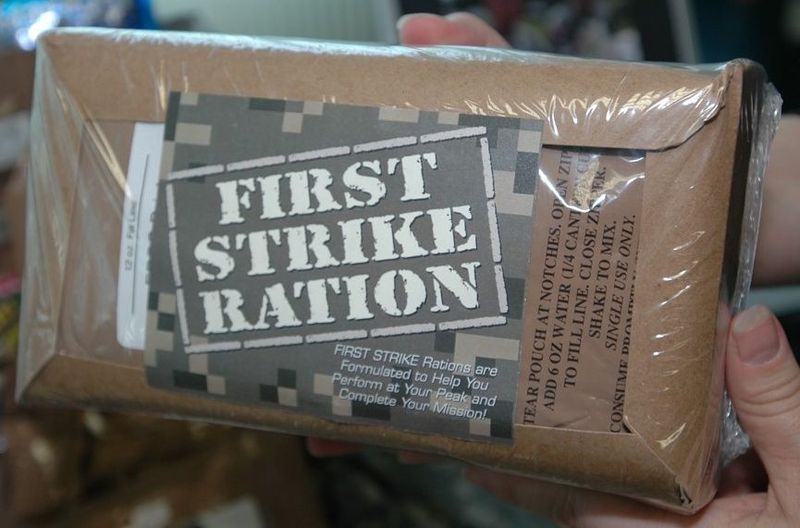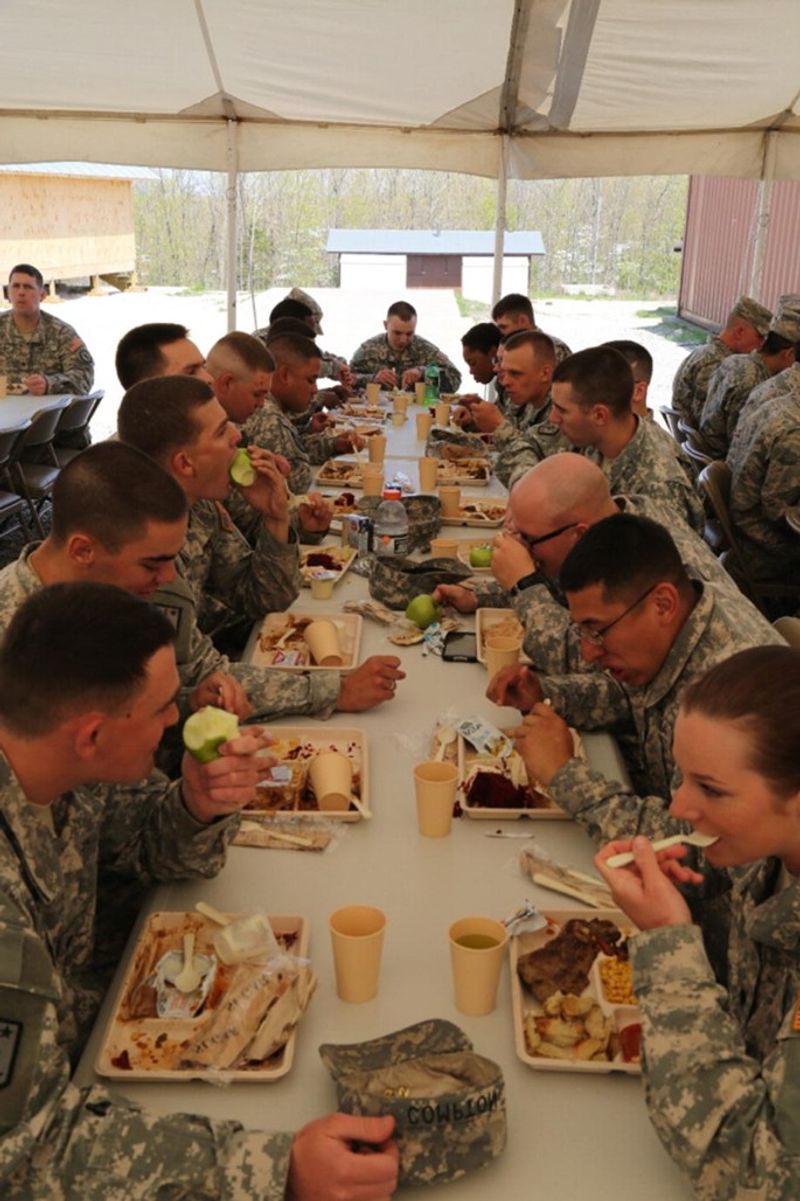American soldiers have fought on battlefields across the globe, facing not only enemy fire but also the challenge of staying nourished in extreme conditions. The food that sustained these warriors evolved dramatically over time, reflecting both technological advances and changing military needs. From simple bread and meat to today’s sophisticated meals, the story of military rations mirrors America’s journey as a fighting force.
1. Garrison Ration (1775–1890s): The Foundation of Military Nutrition
Established by the Continental Congress during the Revolutionary War, the Garrison Ration formed the bedrock of American military sustenance for over a century. Soldiers received a daily allowance of meat (typically beef or pork), bread, vegetables, and milk – simple fare meant to mirror civilian diets of the era.
Initially including a rum ration, this alcoholic component was eventually replaced with coffee as temperance movements gained influence. The ration evolved slowly over decades, gradually incorporating nutritional discoveries as science progressed.
Despite its basic nature, the Garrison Ration established crucial principles that would guide military feeding for generations: standardization, nutritional adequacy, and adaptability to supply conditions.
2. Iron Ration (1907–1922): Emergency Nutrition in a Tin
The Iron Ration marked America’s first attempt at creating a truly portable emergency food supply for soldiers. Packed in a compact tin about the size of a sardine can, it contained three chocolate bars and three beef bouillon cakes mixed with parched wheat—innovations for their time.
Designed to sustain a fighter for one day when cut off from regular supply lines, this ration prioritized caloric density over palatability. Soldiers were instructed to consume it only when absolutely necessary, as its taste left much to be desired.
Though limited in variety, the Iron Ration represented a significant leap in military feeding strategy, acknowledging that modern warfare required soldiers to carry emergency sustenance into battle.
3. Reserve Ration (1917–1937): Feeding the Doughboys
When American doughboys marched into the muddy trenches of World War I, they carried the Reserve Ration—a significant upgrade from its predecessors. Each day’s allotment included 12 ounces of canned meat (usually corned beef), two 8-ounce tins of hardtack biscuits, sugar, and coffee grounds.
Soldiers quickly learned to enhance these basics by trading with Allied troops or foraging locally. French wine and cigarettes became prized additions to the official components.
The Reserve Ration’s true innovation wasn’t its contents but its concept: a complete day’s nutrition in a single package that could sustain a fighter when field kitchens couldn’t reach the front lines. This fundamental approach would influence military feeding for decades to come.
4. C-Ration (1938–1958): The Canned Combat Classic
The iconic C-Ration became the constant companion of American GIs from World War II through the early years of Vietnam. Housed in olive drab cans opened with a P-38 can opener (which many veterans kept as souvenirs), these meals featured hearty options like meat and beans, ham and lima beans, or spaghetti with meat sauce.
Complementary items included crackers, a chocolate bar, instant coffee, and the treasured accessory pack with cigarettes and toilet paper. At 12 pounds per day’s worth, C-Rations were notoriously heavy in soldiers’ packs.
Despite frequent complaints about repetitive menus, many veterans later recalled C-Rations with surprising fondness—perhaps because sharing these meals created bonds among fighting men facing danger together.
5. K-Ration (1942–1945): Lightweight Meals for Mobile Forces
Created by nutrition pioneer Dr. Ancel Keys (hence the “K”), this compact ration revolutionized feeding for highly mobile troops. Packaged in waxed cardboard boxes small enough to fit in cargo pockets, K-Rations came in breakfast, lunch, and dinner versions—each containing a small canned entrée, biscuits, a chocolate bar, and fruit bar.
Paratroopers jumping into Normandy carried these lightweight meals, appreciating their portability if not their taste. The dinner unit’s canned cheese became notorious for its peculiar flavor and texture, often traded away to less discriminating comrades.
While nutritionally adequate for short durations, K-Rations weren’t designed for extended use. Soldiers subsisting on them for weeks often lost weight, leading commanders to rotate troops back for heartier meals when possible.
6. 5-in-1 and 10-in-1 Rations (1942–1945): Meals for the Squad
Unlike individual rations, these innovative packages fed entire fighting units together, fostering camaraderie around shared meals. The 5-in-1 fed five soldiers for one day, while the improved 10-in-1 fed ten men (or five men for two days), containing ingredients for cooking proper meals.
Inside these crates, soldiers found canned meats, vegetables, fruit, coffee, powdered milk, and even cigarettes. Most importantly, they included cooking equipment like a small stove and utensils, allowing troops to prepare hot meals in field conditions.
These group rations represented military nutritionists’ recognition that food wasn’t just fuel—it was also vital for morale. The act of cooking and eating together strengthened unit cohesion, a psychological benefit beyond mere caloric intake.
7. Jungle Ration (1942–1943): Tropical Warfare Sustenance
The brutal Pacific theater demanded specialized nutrition that could withstand extreme heat and humidity without spoiling. Enter the Jungle Ration—a lightweight alternative featuring dehydrated components specifically designed for tropical conditions.
Each package contained dried beef, powdered eggs, dehydrated soup, compressed cereal bars, and dried fruits. Soldiers would rehydrate these components using local water sources (after purification), creating meals that required minimal cooking.
Though short-lived in official use, the Jungle Ration pioneered dehydration techniques that would influence future combat feeding systems. Its lightweight design acknowledged the harsh reality that Pacific island-hopping campaigns required soldiers to carry everything on their backs through sweltering conditions where standard rations quickly spoiled.
8. Parachute Emergency Ration (1942–1952): Survival Food from Above
For aircrews facing the terrifying prospect of being shot down over hostile territory, the Parachute Emergency Ration provided a lifeline. Strapped directly to flight suits or parachute harnesses, these compact kits contained high-calorie chocolate bars, hard candies, bouillon cubes, and water purification tablets.
Unlike combat rations, these packages weren’t meant for regular meals but for pure survival. Every component was selected for maximum calories in minimum space, designed to keep a downed aviator alive until rescue or escape became possible.
The psychological impact of carrying these rations was perhaps as important as their nutritional value. Airmen took comfort knowing they had at least some chance of survival if forced to bail out over enemy territory or vast oceans.
9. Meal, Combat, Individual (MCI) (1958–1980): Vietnam’s Canned Controversy
The MCI represented an evolutionary rather than revolutionary step in combat feeding, essentially updating the aging C-Ration system for the Vietnam era. Packaged in olive drab cans and cardboard boxes, MCIs offered slightly improved variety with entrées like beef with spiced sauce and chicken and noodles.
Soldiers nicknamed these meals “C-rats” despite the official name change, carrying on traditions like heating them with C-4 explosive (against regulations but widely practiced). The included P-38 can opener became so iconic that many veterans carried theirs for decades after service.
While nutritionally adequate, MCIs became symbols of the military’s slow adaptation to changing warfare. Their heavy weight (over 2 pounds per meal) burdened troops on long jungle patrols, leading many to discard components to lighten their loads.
10. Long Range Patrol (LRP) Ration (1964–1980s): Special Forces Sustenance
When elite reconnaissance teams ventured deep behind enemy lines in Vietnam, traditional canned rations proved too heavy and noisy. The revolutionary LRP Ration solved this problem with freeze-dried technology borrowed from NASA’s space program, reducing weight by 90% compared to wet rations.
Each foil pouch contained dehydrated meals like beef with rice or chicken stew that required only water and 5-10 minutes to reconstitute. Green Berets and Long Range Reconnaissance Patrol teams could carry several days’ worth while maintaining mobility.
Beyond weight savings, LRPs offered tactical advantages: no metal cans to reflect light or create noise when discarded, and minimal cooking odors that might reveal positions to enemy forces. This specialized ration foreshadowed the future direction of military feeding systems.
11. Meal, Ready-to-Eat (MRE) (1981–Present): Modern Military Meals
The revolutionary MRE finally eliminated cans from combat feeding, introducing retort pouches that could withstand extreme conditions while dramatically reducing weight. Early versions earned nicknames like “Meals Rejected by Everyone,” but continuous improvements have made modern MREs surprisingly palatable.
Each tan package contains an entrée, side dishes, dessert, beverage mixes, and the popular flameless ration heater—a chemical pad that warms food without fire. Menu options expanded from 12 to 24 varieties, ranging from beef stew to vegetarian options.
MREs accompanied American forces from Panama to Iraq and Afghanistan, becoming cultural touchstones. Their impact extended beyond battlefields too, becoming emergency staples during natural disasters and inspiring a surprising civilian following of MRE collectors and reviewers.
12. First Strike Ration (2007–Present): Eat-on-the-Move Innovation
When commanders realized soldiers in intense combat often skipped meals rather than stopping to prepare MREs, the First Strike Ration emerged as the solution. Packaged in a compact brick-shaped pouch, this specialized ration contains pocket sandwiches, energy bars, and other foods requiring zero preparation.
Every component can be eaten cold and on the move—perfect for troops in active combat operations. At just 2.5 pounds, each package provides a full day’s nutrition at one-third the weight of three MREs.
First Strike Rations debuted in Afghanistan, where soldiers conducting multi-day missions appreciated their lightweight design and easy-to-eat format. The sandwiches—including favorites like bacon cheddar and pepperoni—were particularly popular compared to traditional military entrées.
13. Unitized Group Ration (UGR) (1995–Present): Feeding the Masses
When American forces establish more permanent bases, the Unitized Group Ration transforms field feeding into something approaching restaurant quality. Each module feeds 50-100 troops, containing everything needed to prepare complete meals in field kitchens.
The UGR comes in three variants: the heat-and-serve UGR-H&S requires minimal preparation; the UGR-A includes frozen components for enhanced quality; and the UGR-E contains shelf-stable entrées. All versions include detailed preparation instructions even untrained personnel can follow.
Modern UGRs feature surprisingly sophisticated options like seafood newburg, chicken cordon bleu, and vegetarian meals—a far cry from the hardtack of earlier eras. This system exemplifies how military feeding now aims not just for nutrition, but also for morale-boosting quality.
